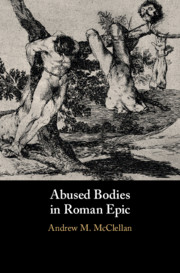Book contents
- Abused Bodies in Roman Epic
- Abused Bodies in Roman Epic
- Copyright page
- Dedication
- Contents
- Preface
- Notes on Texts and Abbreviations
- Introduction
- Chapter 1 Setting the Stage: Corpse Abuse in Homer and Virgil
- Chapter 2 Decapitation in Lucan, Statius, and Silius Italicus
- Chapter 3 Unburied Past: Lucan’s Bellum ciuile
- Chapter 4 Argonautic Abuses: Valerius Flaccus’ (and Apollonius’) Argonautica
- Chapter 5 Funeral ‘Rights’: Statius’ Thebaid
- Chapter 6 Grave Encounters: Silius Italicus’ Punica
- Epilogue A post mortem
- Bibliography
- Index Locorum
- General Index
Chapter 3 - Unburied Past: Lucan’s Bellum ciuile
Published online by Cambridge University Press: 08 July 2019
- Abused Bodies in Roman Epic
- Abused Bodies in Roman Epic
- Copyright page
- Dedication
- Contents
- Preface
- Notes on Texts and Abbreviations
- Introduction
- Chapter 1 Setting the Stage: Corpse Abuse in Homer and Virgil
- Chapter 2 Decapitation in Lucan, Statius, and Silius Italicus
- Chapter 3 Unburied Past: Lucan’s Bellum ciuile
- Chapter 4 Argonautic Abuses: Valerius Flaccus’ (and Apollonius’) Argonautica
- Chapter 5 Funeral ‘Rights’: Statius’ Thebaid
- Chapter 6 Grave Encounters: Silius Italicus’ Punica
- Epilogue A post mortem
- Bibliography
- Index Locorum
- General Index
Summary
Chapter 3 focuses on funeral denial and perversion in Lucan’s Bellum ciuile. The first section details the elderly survivor’s recollection of the civil war between Marius and Sulla in BC 2. This flashback is crucial for Lucan’s handling of the issues of funeral rites as it anticipates the horrors to come, particularly the warped funeral for Pompey in book 8. Lucan expands Pompey’s death, abuse, and funeral rites over the final three books. The disparate scenes create a patchwork of repeated but slightly altered funeral rites, none of which function as a legitimate ‘whole’. The next section considers Caesar’s position vis-à-vis funeral rites by exploring four scenes that demonstrate his rejection of or lack of interest in what happens to the human body after death (including his own body). The chapter ends with the witch Erichtho’s ‘zombie’ prophetic corpse-soldier, his quasi-prophecy predictive of further death, and Erichtho’s paradoxical, almost loving funeral for the corpse-soldier in book 6. The chapter argues briefly in closing that Lucan lingers on issues of death-in-life, and life-in-death, as a means of highlighting his perception of Neronian Rome as a slavish ‘death-world’.
- Type
- Chapter
- Information
- Abused Bodies in Roman Epic , pp. 115 - 169Publisher: Cambridge University PressPrint publication year: 2019

